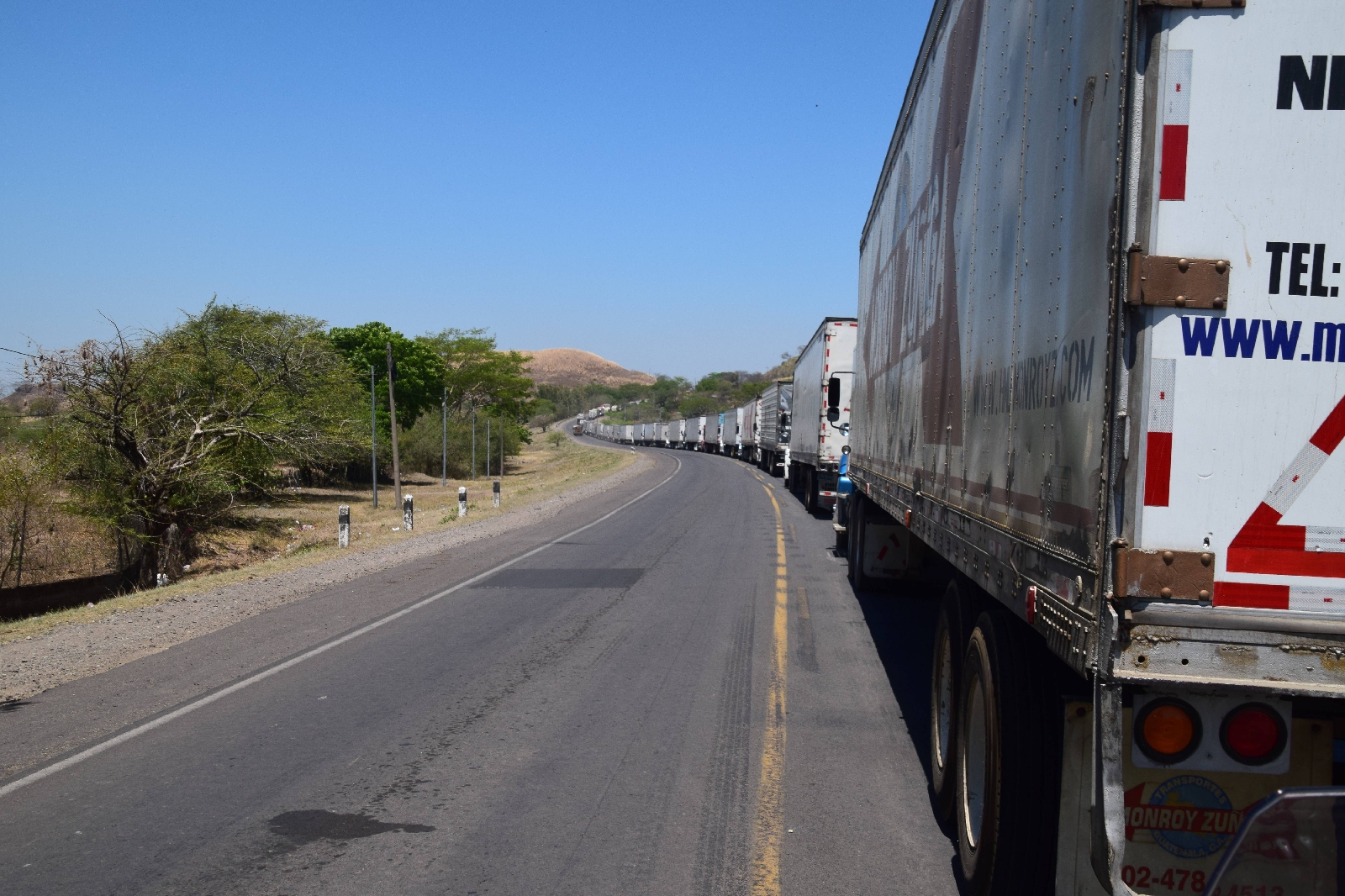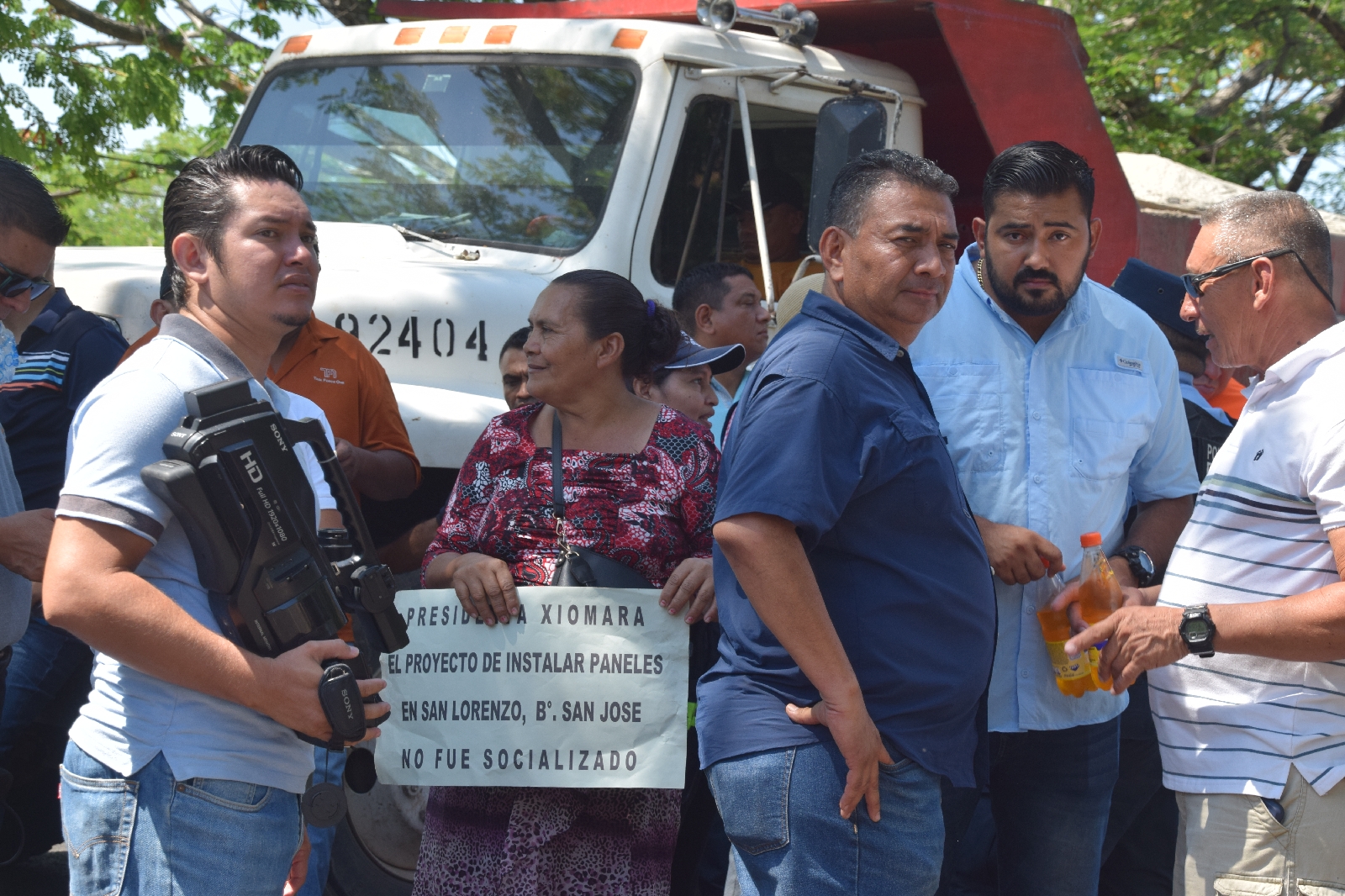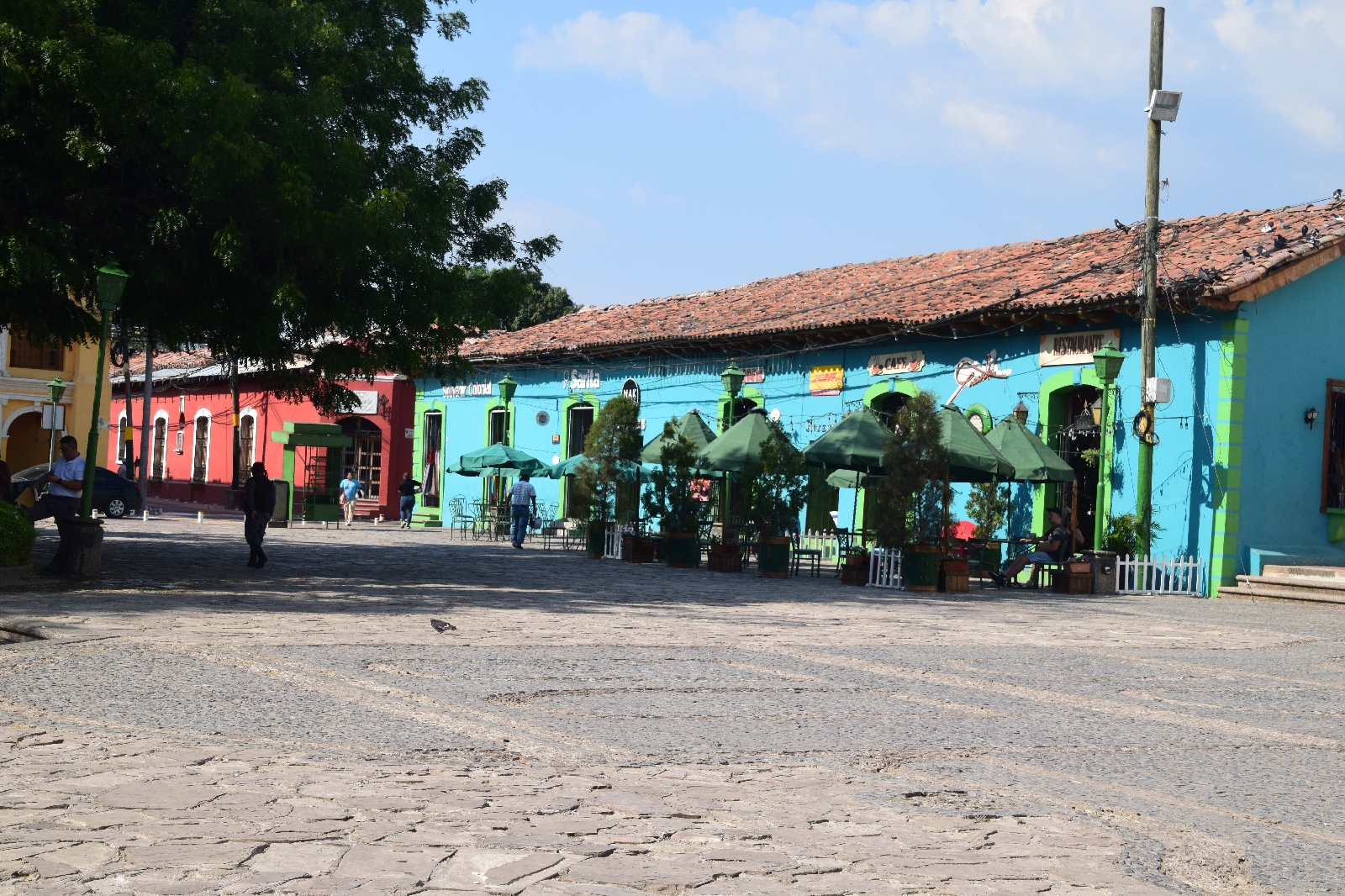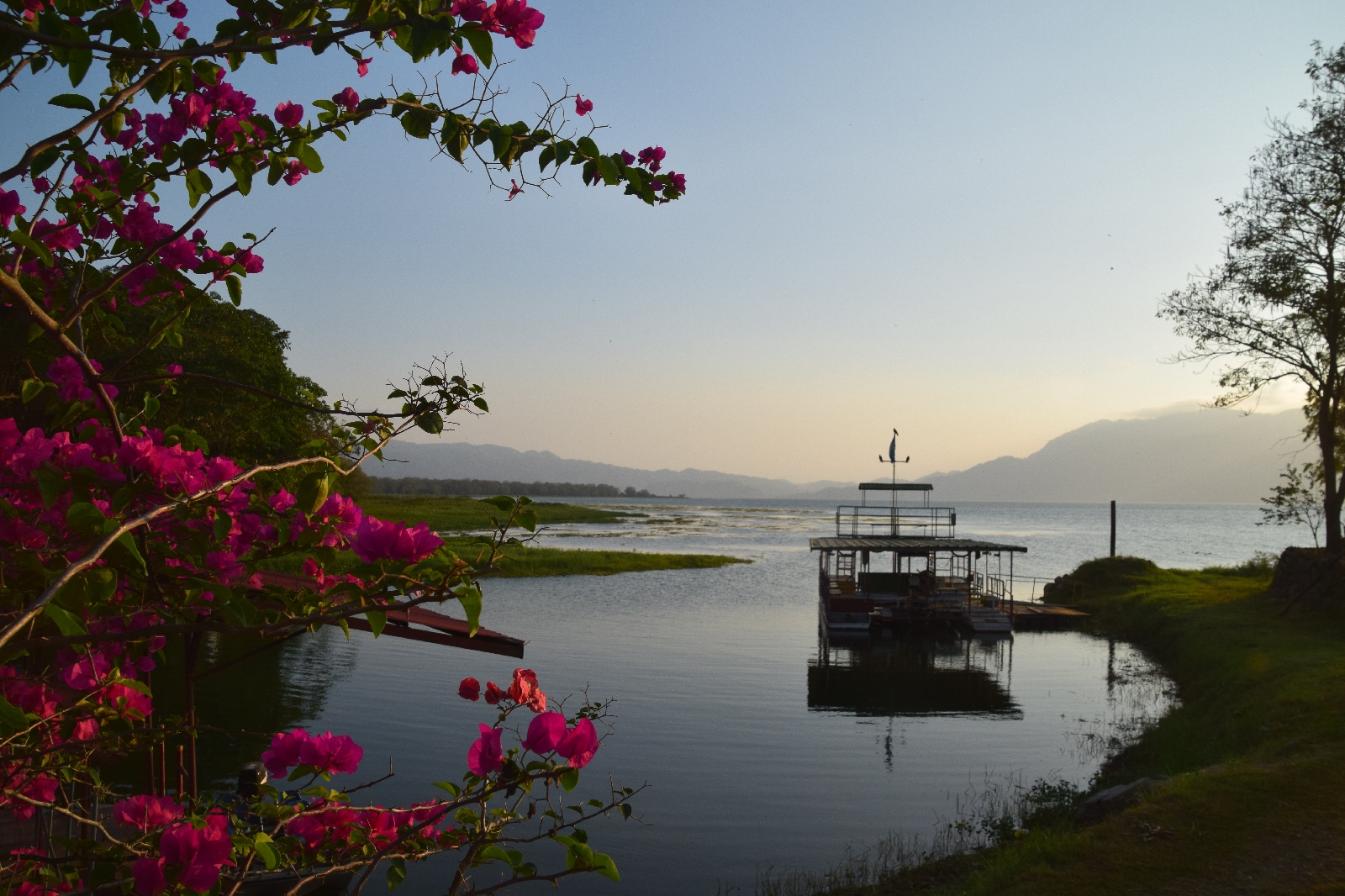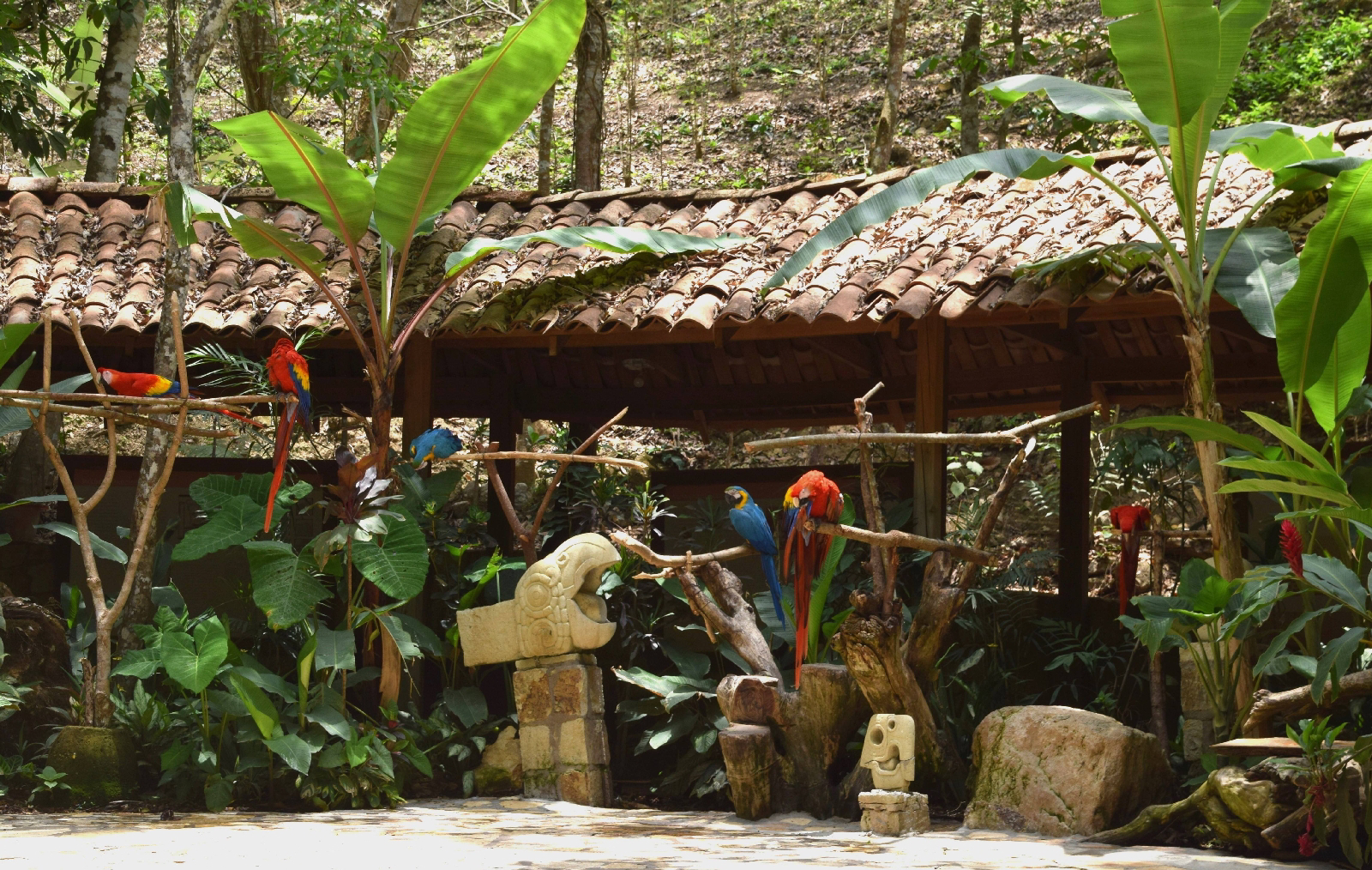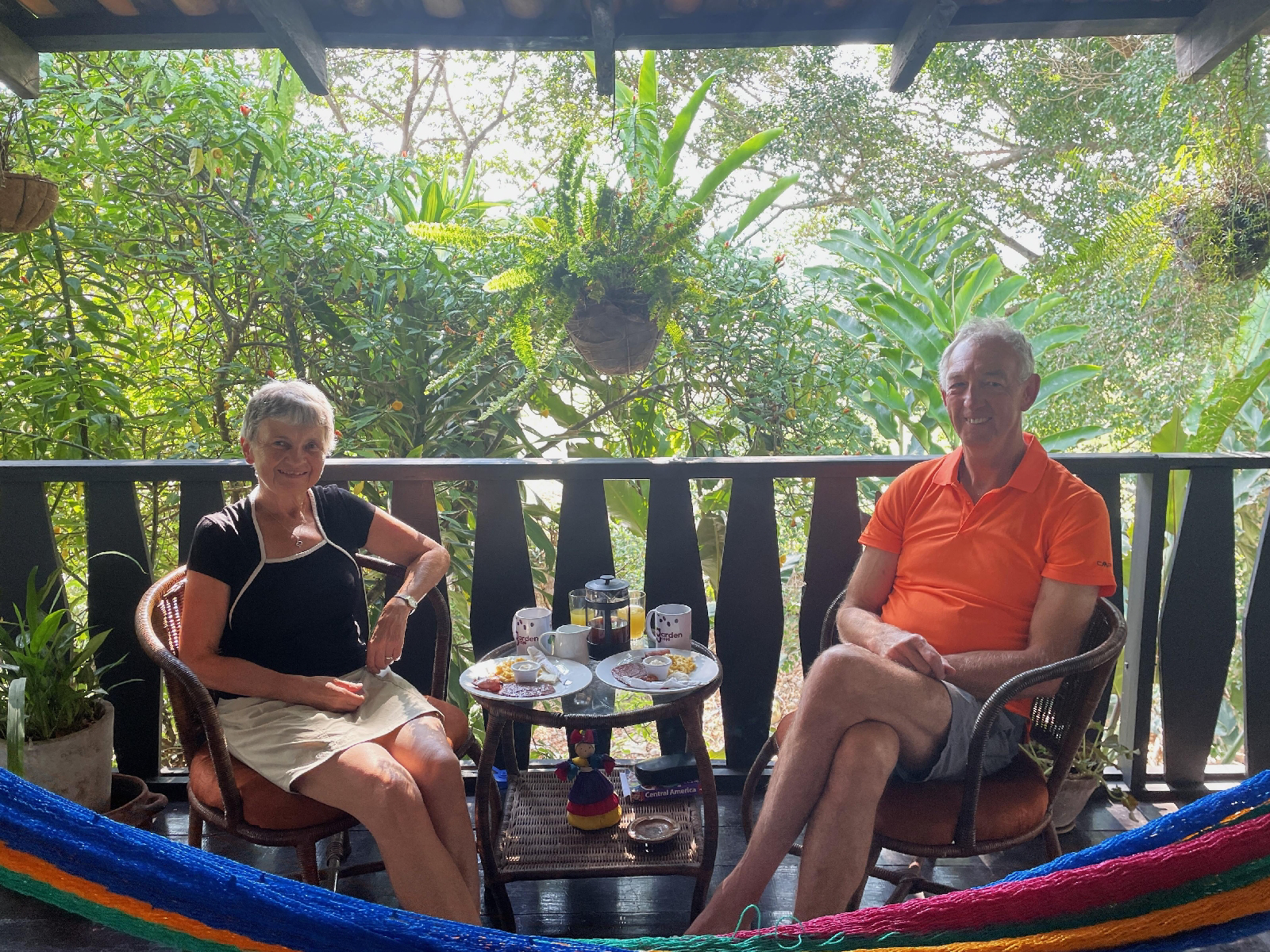Crossing the border was pretty painless as long as you call 50$ - official, not bribe/tip - painless. There was a 3km queue of lorries at the border which we skirted round; it was, however, a tad chaotic as you got close to the border post itself. The speed at which the lorries were being treated would mean that they would be there for a few days. Apparently the lorries blocked the border crossing three days later out of frustration. We stayed close to the border after crossing it and we got to the accommodation just before it hit 40°C. It was brutal on the bike, not just the heat and sun but also a very warm wind. One of the ways we judge the economic status of a country, albeit not very scientifically, is by the density of roadside rubbish. Peru was high density. First impression on Honduras was that it was going to be a very poor country. There wasn't much to Choluteca where we were staying. At least we didn't find much - nor did we go looking. The place suffered from border/'middle of nowhere' syndrome, as far as prices for decent accommodation are concerned - way too expensive for what it was. As far as eating out was concerned we had the choice of Wendy's, Dunkin' Donuts, KFC, Pizza Hut, Little Ceasar's or Popeye's. More Little America in Central America...
Next stop Comayagua which, historically, was the second capital of Honduras. We avoided going to the current capital, Tegucigalpa, as it was too hard to pronounce. Thirty minutes out of Choluteca we hit a line of stationary lorries. The queue went on for 7km and also contained cars, vans and buses. We blithely continued overtaking the queuing vehicles, slightly worried that we had somehow taken the wrong road and this was the queue for the border with El Salvador. Whilst passing the stationary traffic we noted the first PV farms we had seen for a long while and we said to ourselves how good it was to see renewable energy in a poor (if you exclude accommodation) country.
As we got to the front of the queue it got very sticky indeed with cars occupying both sides of the carriageway and the verges - immaterial of whether they were paved or not. They were able to do this because there was nothing coming the other way. It was so sticky that even on a motorbike we could only get to about 150m from the front of the queue where there was our first Central American road block. Tyres on the road, some tape, a few 4x4 pick ups, a loud speaker van, a film camera and some watching policemen. Some local people were protesting about the PV panels we had been pleasantly surprised to see. When we asked we were told the blockade would last four hours; we were also told that it would last one hour and, again, that it would last until two o'clock in the afternoon. So we sat down at the side of the road, amongst the rubbish that identified the economic state of the country, but, more importantly, in the shade. For an hour and a half. That was when somebody came to make a speech. However, whatever was being said, and recorded, was drowned out by the sound of horns being pressed. Françoise took the opportunity to mention her views on Honduras...
Nothing passed through the blockade. Not even ambulances. It would have been impossible for them to get further than the blockade anyway unless the congestion was somehow relieved by letting other vehicles through in the opposite direction. Everybody seemed to accept the situation as 'normal'. No fights broke out. Nobody tried to storm the blockade. It was, in some respects, quite civilised. However, after an hour and a half sat around in the heat, albeit in the shade, we had had just about enough. And luckily that was when they packed up for the day. An interesting thing to note was the large numbers of ambulant snack, drink and ice cream sellers that had turned up - on the off-chance?
Comayagua was the second capital of Honduras. To be kind, Honduras probably had a very small population at that time and the Spaniards had probably decided not to make a big deal of this place. But there is a church to see there... And some not very good quality examples of colonial buildings and a market that sold more beans and rice than fruit.
Sometimes your mind wanders onto other things when riding the bike. Like why have those vultures been circling overhead for the last four months? Or why do insects always bite in funny places; wrists, elbows, ankles, side of knees, between fingers? Do we need to be wary of carpets in hotel rooms - nobody seems to have vacuum cleaners - is that why our ankles itch? Is it possible to genetically modify cockerels so they don't crow and wake us up in the morning?
Fried chicken is, by a long way, the most popular food in South and Central America. You can also have fried eggs with everything. In a large number of establishments we have stayed at, the source of these two food stocks, strutt around the outside spaces - the word 'garden' might be an exaggeration in a lot of the cases. If there are chickens, then there are cockerels...
Fried chicken where we were staying was available at Pollomania, Pollolandia, Rosty Pollos, Pollos LaKZ, Pollos Karen, Maxi Pollo, El Buenos Pollo, Mega Pollo and Casa de Pollo Rey and that's before you get to the grill and barbecue restaurants that don't have chicken in their name...
From Comayagua we rode north to Lago Yojoa which was quite pretty and quite a large lake, but absolutely nothing in comparison to Lake Nicaragua - Yojoa isn't big enough to have a volcano island in the middle! We were the only guests at somewhere that would probably have been quite thriving in the 60's or 70's. Its location was perfect; we could have been at Lake Windermere but investment had not followed. Although we were the only people staying in the accommodation, Michel and Pascale with their dainty little camper van were using the lakeside carpark there for a couple of nights. They complained equally about the cicadas - if it wasn't the cockerels, it was the cicadas. Sometimes both.
We struggled a bit with the decision as to where to stop next en-route to Copan as we weren't sure what the roads were going to be like. In the end we plumped for going straight to Copan Ruinas, by a longer than necessary route which we knew would have significant roadworks but would be within our capabilities. The roadworks were over an 80km stretch and we probably lost a couple of hours with them. It was a tough ride due to the heat and dust and the time it took for us to get there. We are not always looking our best when we check in at accommodation. On the way we stopped for a drink at a petrol station - it is possible in Honduras - and wondered what was happening when we walked in, as there was a man in a cap with a rifle. We needed that one second to see the word Security written on his cap. Not sure whether man with gun, Security on his cap or not, made us feel more secure or not? Security costs here must be quite excessive, as a large number of shops such as pharmacies have security guards posted at the front - and the banks of course.
Our objective was to play tourist in Copan Ruinas. With some hesitation we went to visit Macaw Mountain, as birds and other animals in cages aren't really our thing - we walked out of one in Panama. However this one was a rescue, rehabilitation and reintroduction centre primarily for Scarlet Macaws. They did have a few other birds that had come in via the rescue route but they were not going to be released here.
Scarlet Macaws were very important in the Mayan civilisation and they are the national bird of Honduras. They were also seen as the 'must-have' accessory for expats settling on the beach islands. When paradise became overwhelming for the expats they left their Macaws behind with an American lady who soon amassed 30 or 40 of them which eventually became a bit too much for her and somebody else took it over and started a little zoo. The number of birds grew and then somebody official, big in parrots globally, proposed to move them all off the island back to a more natural habitat and Macaw Mountain was born. They look after rescue birds but also reintroduce birds back into the wild every year. They are currently reintroduced at the site of the Mayan ruins, which is quite poignant, as well as in the local valley. There are now proposals for their reintroduction in other parts of Honduras. They currently have about 300 birds and release one year old ones back into the wild after a training programme. They have a breeding programme and chicks are either looked after by the parent birds or they have an assist programme for the chicks of inadequate parents. Three chicks were born last year to the birds flying freely in the valley above the centre. The fully grown birds are massive and can fly very close to you - one almost knocked Francoise's sun hat off. Some of the rescue birds will never be released. They can't fly due to having been in a cage too long such that they never learned to fly or to having their wings damaged by dogs. They sit on perches out in the open squawking to each other and, if you can say that, look very happy and make an awful lot of noise when the staff (with food) come close. One of them would very likely end up in prison in the UK as it had been taught to wolf whistle. All in all it was a very entertaining, educational and emotional visit. There was also a number of soft toy look alikes in the shop. And next to them one that wasn't a soft toy at all that had us confused for a while... and Polly would probably have nipped our hand quite sharply had we tried to pick her up and take her to the counter!
From Macaws we went to the Ruins Museum. A number of sculptures had been brought inside the museum from the site in order to preserve them. They had been replaced on site with replicas a bit like in the plaster cast section of the V&A which is one of Paul's favourite rooms there. They had also built a full scale replica of one of the Temples that they found inside the Mayan pyramids. A lot of the archaeological work and discoveries here are quite recent, within the last 40 years or so.
The following day we visited the ruins themselves. Despite it being a major attraction there were very few people. Like the mud brick pyramids we had seen at Trujillo in Peru, the Mayans built over the top of previous pyramids when a ruler died. This was why they had managed to find an intact temple inside one of the pyramids. Jungle had taken over the site when it had been abandoned and, although it has now been cleared, there are some massive trees interspersed with the ruins which are probably destroying and holding the ruins together in equal measure. This was the first of our Mayan Temples. There will be more to come. It was very impressive and known for the quality of the 3D sculptures and hieroglyphics. We also saw a number of the Scarlet Macaws in the trees flying freely around the ruins.
Rather unbelievably our last night in Copan Ruinas coincided with a celebration of the forthcoming marriage of a local Harley rider and we said 'Hello' to the first two bikes that had turned up in the Plaza when we went out for something to eat. The guys told us that anyone who turned up in the Plaza that night on a Harley got free beer. So after eating we went back to the hotel and rode into the square for our beer. We thought we should have got extras for the longest journey to get there. With our bike there were nine Harleys there - and a few lookalikes.
Our last day in Honduras took us to the small border town of Ocotepeque; another place with overpriced accommodation and not many options with regard to eating in the evening. Perhaps it will be chicken tonight?

